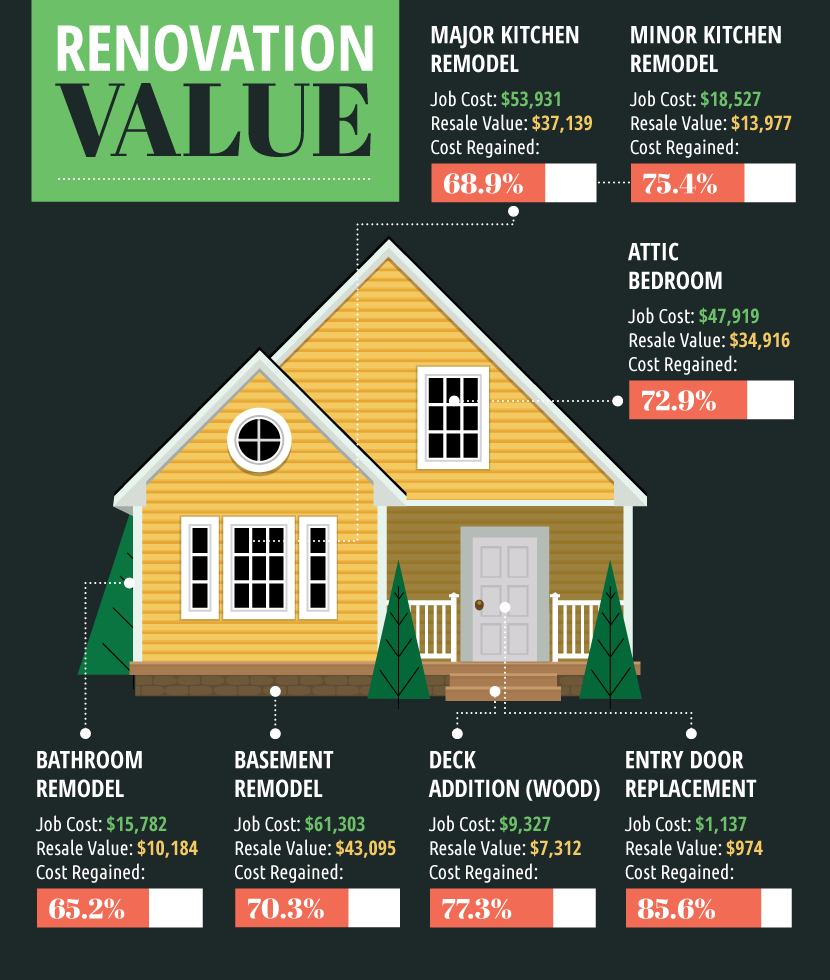Enthralled By The Principle Of Infusing Your Home With Shade? Discover The Essential Steps To Develop An Unified Color Scheme That Mirrors Your Private Design
Enthralled By The Principle Of Infusing Your Home With Shade? Discover The Essential Steps To Develop An Unified Color Scheme That Mirrors Your Private Design
Blog Article
Author-Porterfield Aaen
When embarking on a home restoration task, the choice of color palette can significantly impact the overall setting and aesthetic appeals of your home. The process of choosing the ideal colors includes a thoughtful evaluation of numerous aspects, from the area's all-natural lights conditions to its existing layout components. By recognizing how https://denver-online-video55554.ltfblog.com/32023894/5-constant-errors-in-kitchen-remodellings-and-strategies-to-avoid-them communicate and affect moods, you can craft a harmonious environment that shows your style and personality. Keep tuned to discover the necessary steps in developing a color scheme that transforms your home into a sanctuary of aesthetic pleasure.
Comprehending Shade Theory
In the realm of home remodelling, an important element to think about is understanding shade theory. Color theory plays a critical function in developing a cohesive and visually attractive room. It entails the research study of exactly how shades engage with each other and just how they can evoke different emotions and moods. By grasping the basics of shade theory, property owners can make informed decisions when choosing paint colors, furniture, decoration, and devices for their home.
One fundamental principle in color concept is the shade wheel, which consists of primaries (red, blue, yellow), additional shades (orange, green, purple), and tertiary shades (combinations of key and secondary colors). Understanding the relationships between these shades can help in producing unified color pattern.
As an example, complementary shades (contrary each other on the color wheel) can develop a dynamic contrast, while comparable shades (next to each other on the shade wheel) can give a feeling of unity and cohesion.
Assessing Your Space
Having realized the basics of shade concept and the significance it keeps in developing visually enticing rooms, the next step in the procedure of renovating your home involves analyzing your room.
Prior to choosing a shade scheme, it is vital to think about the dimension, format, lighting, and existing style of each area. Assess the natural light that gets in the room throughout the day, as it can affect how colors show up. https://www.architecturaldigest.com/story/bad-contractors-red-flags-warning-signs may make a room feel cozier but can also make it show up smaller, while lighter shades can produce a sense of airiness and visibility.
In addition, evaluate the room's function and the state of mind you want to produce. For instance, calming blues and greens are suitable for bed rooms, while dynamic yellows and oranges can stimulate a work space.
Bear in mind of any kind of building functions or prime focus that you want to highlight or downplay. By thoroughly analyzing your area, you can make enlightened decisions when choosing the best shade combination for your home renovation.
Selecting the Right Colors
When it concerns choosing the right colors for your home improvement, the vital depend on recognizing the impact various hues can have on a room. Colors can evoke numerous feelings and established the tone for the whole room.
Warm tones like reds, oranges, and yellows develop a comfy and inviting ambience, excellent for living areas or eating areas. On the other hand, amazing tones such as blues, environment-friendlies, and purples advertise leisure and tranquility, making them excellent for rooms or shower rooms.
Neutral colors like whites, grays, and beiges give an ageless and functional background that can be coupled with bolder accents or altered easily with time.
Think about the natural light in your area when choosing shades, as it can considerably affect how a color shows up. Darker tones might absorb light, making an area really feel smaller, while lighter shades can mirror light and produce a ventilated feeling.
Don't hesitate to examine paint samples on your wall surfaces prior to committing to a color to see just how they look in various illumination throughout the day. Inevitably, choosing the ideal colors is about developing a harmonious and aesthetically attractive environment that fits your individual design and enhances the performance of each room.
Verdict
To conclude, selecting the perfect shade palette for your home remodelling involves considering aspects such as size, layout, illumination, and existing decoration. Comprehending color theory and the emotions various shades evoke can help create the wanted atmosphere in each space. By very carefully examining your room and choosing the appropriate shades to highlight or downplay features, you can attain an unified and well-informed layout that boosts the general aesthetic of your home.
